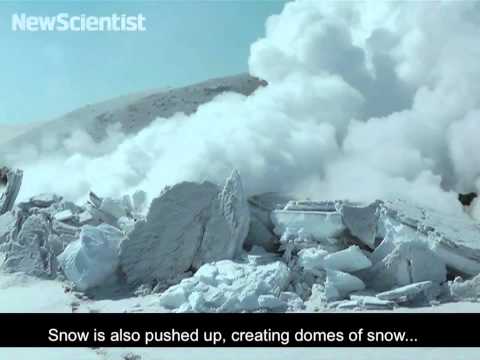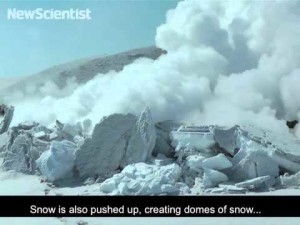When lava meets snow at the volatile Tolbachik volcano in far eastern Russia, they eject jets of steam as they battle it out. But a look beneath the surface reveals surprising differences in the way the two interact, depending on the type of lava.
Ben Edwards of Dickinson College in Carlisle, Pennsylvania, and colleagues observed lava as the volcano erupted during the winter of 2013. They dug daring observation pits in front of advancing lava flows to identify how it moved through the snow.
As shown in these videos, chunky a’a’ lava advances on top of the rigid snowpack in a rolling caterpillar-like motion, on a layer of melting water. The lava forms a thick tongue that can travel hundreds or thousands of metres.
In contrast, as smoother pahoehoe lava advances, the front of the flow moves under a snowpack, up to 2 metres below the surface. The lava expands beneath the snow, causing steam to shoot up as it mixes with meltwater. It also pushes snow upwards, building snow domes that turn into blocks strewn across the surface as they melt.
The distinctive patterns that result could serve as a fingerprint that identifies where ancient lava has flowed over snow, revealing more about Earth’s climate in the distant past – or even giving clues about the icy, lava-soaked history of Mars.

